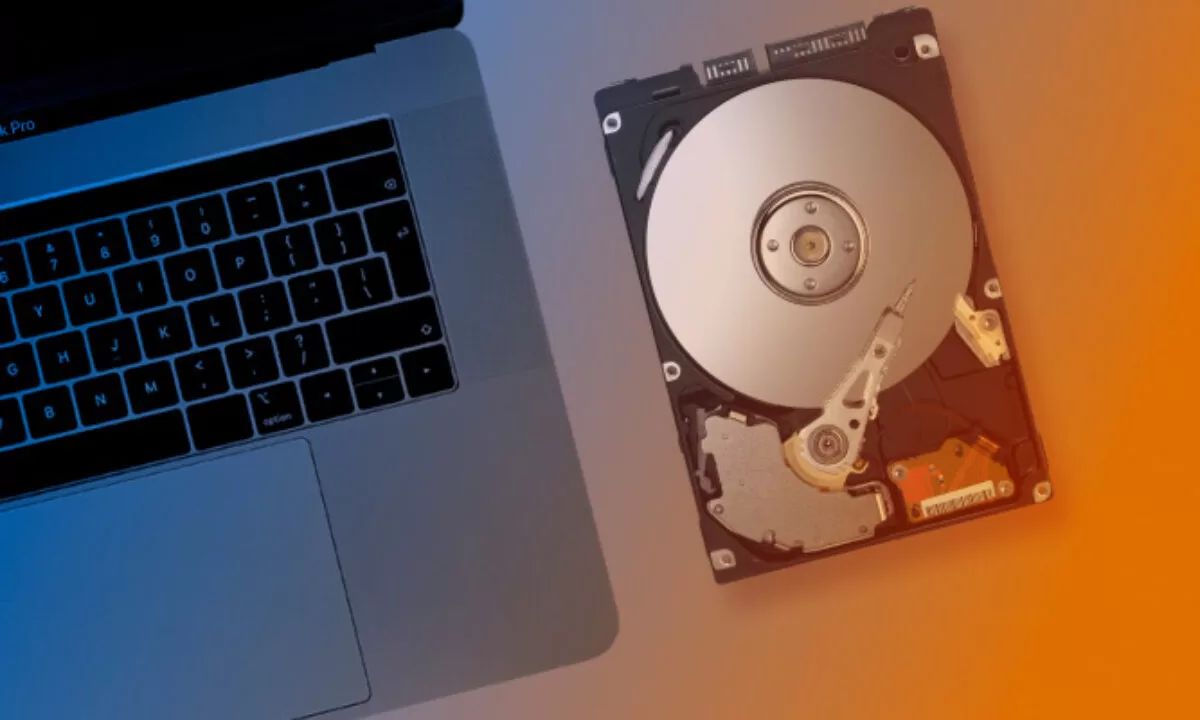Introduction
When you visit a website, various methods are used to track certain information about you as a visitor. This information helps website owners optimize their site’s performance, personalize your browsing experience, and deliver targeted advertisements. In this article, we will explore the different techniques used to track visitors and the data collected.
One common method employed by websites is the use of cookies. A cookie is a small text file that is placed on your hard disk drive by a website. These cookies allow the website to remember specific information about you, such as your preferences, login details, and browsing activity. They can be either temporary, known as session cookies, or permanent, known as persistent cookies. These cookies enable websites to provide a more personalized and efficient browsing experience.
Another piece of information that websites can record is your IP address. Your IP address is a unique numerical label assigned to your device when connecting to the internet. It helps websites identify your location and allows for website analytics, security measures, and personalized content delivery. While IP addresses don’t typically contain personally identifiable information, they can be used to track your online activities.
Your user agent is another piece of data that websites may collect. The user agent is a string of text that identifies the device and browser you are using to access the website. It includes details such as the browser name, version, and operating system. This information is useful for website developers to ensure compatibility and optimize the user experience across different platforms.
In addition to the user agent, websites can also track the referrer URL. The referrer URL is the address of the webpage that you were on before clicking a link to the current website. By analyzing the referrer URL, website owners can assess the source of their traffic and tailor their marketing strategies accordingly.
Session IDs are another tracking method used by websites. A session ID is a unique identifier assigned to your browsing session. It helps websites remember your preferences and maintain a continuous user experience as you navigate through different pages. Session IDs are usually stored in cookies or URLs and expire once you close your browser.
Cookies
Cookies are one of the most commonly used methods for tracking information about website visitors. When you access a website, it may send a small text file called a cookie to your hard disk drive. This cookie contains data that is specific to your browsing session and allows the website to remember certain information about you.
There are two types of cookies: session cookies and persistent cookies. Session cookies are temporary and are deleted as soon as you close your browser. They are used to track your activities during a single browsing session and help personalize your experience on the website. Persistent cookies, on the other hand, are stored on your hard drive and remain there until they expire or are manually deleted. These cookies are used to remember your preferences and provide a more personalized browsing experience the next time you visit the website.
Cookies can store a wide range of information, including your login details, browsing history, language preferences, and more. They allow websites to remember who you are and what you like, making it easier for you to navigate the site and access personalized content. Cookies are also used for tracking purposes, enabling website owners to gather anonymous data about visitor behavior, such as the pages visited, the time spent on each page, and the links clicked.
While cookies are essential for many websites to function properly, they have raised privacy concerns. Some users worry that cookies may invade their privacy by collecting and storing personal information without their consent. However, it’s important to note that cookies can only store information that you have willingly provided or that is necessary for the website to function. They cannot access other files on your computer or transmit viruses.
To address privacy concerns, many websites now provide cookie consent notifications, allowing users to choose whether to accept or decline cookies. Additionally, modern web browsers offer settings that allow users to manage and delete cookies. By adjusting these settings, you can control how websites use cookies to track your information.
In summary, cookies are a common method used by websites to track visitor information. They allow websites to remember user preferences, personalize browsing experiences, and gather anonymous data for analytics. While cookies may raise privacy concerns, users have control over their cookie settings and can choose whether to accept or decline them.
IP Address
When you connect to the internet, your device is assigned a unique numerical label known as an Internet Protocol (IP) address. This address serves as a digital identifier for your device, allowing it to communicate with other devices and servers on the internet. Your IP address can provide valuable information to websites, including your approximate location and internet service provider (ISP).
Websites can use your IP address to track certain information about you. This tracking helps website owners analyze visitor behavior, provide personalized content, and enhance security measures. By logging IP addresses, websites can determine the country or region from which you are accessing their site. This information is useful for delivering region-specific content or targeted advertisements.
While IP addresses can provide general information about your location, they do not directly reveal your identity or personal details. For example, websites cannot determine your name, home address, or exact geographical coordinates solely based on your IP address. However, in some cases, the combination of an IP address and additional data from third-party sources may allow for more specific geo-location targeting.
It’s important to note that IP addresses can change, especially if you’re using an internet connection that assigns dynamic IP addresses. Dynamic IPs are commonly used by internet service providers, and they can be reassigned to different devices over time. This means that your IP address may not be consistent every time you connect to the internet.
From a privacy perspective, the collection of IP addresses has raised concerns among some users. They worry that their online activities can be tied to their IP address, compromising their anonymity. To address these concerns, many websites anonymize IP addresses by removing the last few digits or using other methods to make the address less identifiable.
To protect your online privacy further, it is advisable to use virtual private networks (VPNs) or proxy servers. These services can mask your IP address, making it more difficult for websites to track your identity and location.
In summary, your IP address is a unique identifier assigned to your device when connecting to the internet. Websites can use your IP address to gather information about your location and provide personalized content. While IP addresses do not directly reveal personal details, it is important to be aware of the privacy implications and take steps to protect your online identity.
User Agent
When you visit a website, your device sends a request to the server, and part of that request includes a user agent string. The user agent string is a piece of text that identifies the browser, operating system, and device you are using to access the website. It provides valuable information to websites about your browsing environment.
The user agent string typically includes details such as the browser name, version, and rendering engine. It can also indicate the operating system and device type, such as Windows, macOS, Android, iOS, or Linux. This information is essential for website developers to ensure that their websites are compatible with different browsers and platforms.
Websites can use the user agent information to deliver a better user experience. For example, if a website detects that you are accessing it from a mobile device, it can automatically optimize the layout and content for smaller screens. Similarly, if the website identifies that you are using a particular browser version, it can tailor the code and features to ensure proper functionality.
User agent data is also used for analytics purposes. Website owners track user agents to gain insights into the popularity of different browsers and operating systems among their visitors. This information helps them make informed decisions about optimizing their website’s performance and targeting their development efforts.
Some users may be concerned about the privacy implications of user agent tracking. While the user agent string contains information about your device and browser, it does not directly reveal personal or sensitive information. However, combining the user agent with other data points may potentially identify you. To protect your privacy, it is important to be cautious when sharing sensitive information online and to regularly update your browser and operating system to ensure you’re using the latest security patches.
From a web development perspective, it is crucial to test websites on a range of devices and browsers to ensure optimal compatibility. By analyzing user agent data, developers can identify trends and make informed decisions about which browsers and operating systems to prioritize when designing and optimizing their websites.
In summary, the user agent string provides valuable information to websites about the browser, operating system, and device you are using. It helps websites deliver a better user experience, optimize their code, and gather analytics data. While user agent tracking may raise privacy concerns, it does not directly reveal personal information and can be mitigated by staying updated and cautious when sharing sensitive data online.
Referrer URL
When you click a link to navigate to a website, the browser sends a referrer URL along with the request. The referrer URL is the web address of the webpage that you were on before clicking the link. This information provides websites with insights into the source of their traffic and helps optimize their marketing strategies.
The referrer URL helps website owners understand how visitors find their site. For example, if you click on a link from a search engine results page, the referrer URL will indicate that the traffic came from the search engine. Similarly, if you click on a link from a social media platform or another website, the referrer URL will provide that information as well.
Website owners analyze referrer data to assess the effectiveness of their marketing campaigns. They can determine which channels are driving the most traffic and allocate resources accordingly. By understanding the source of their traffic, website owners can optimize their content and advertising strategies to attract more visitors from specific channels.
It’s important to note that not all referrer information is available to websites. In some cases, if you navigate directly through a browser’s address bar or use a bookmark, the referrer URL may be empty or not provided. Additionally, some websites may choose to hide or alter the referrer information for privacy or security reasons.
From a user’s perspective, the referrer URL poses potential privacy concerns. It reveals the previous webpage you were on, which could potentially expose information about your browsing habits. For this reason, some individuals choose to use privacy-focused browsers or browser extensions that can disable or modify referrer information for increased anonymity.
From a web development standpoint, understanding referrer data is essential for optimizing website performance and user experience. By analyzing referrer information, developers can identify the most common entry points to their site and ensure smooth navigation and proper content delivery.
In summary, the referrer URL provides important insights into the source of website traffic. It helps website owners optimize their marketing efforts, understand user behavior, and tailor their content accordingly. While the referrer URL may raise privacy concerns, there are options to modify or disable this information for increased anonymity.
Session IDs
Session IDs are unique identifiers assigned to visitors during a browsing session on a website. They are used to track user activity and maintain session-specific information. Session IDs can be stored in cookies, URLs, or other mechanisms to ensure a seamless user experience as you navigate through different pages of a website.
When you visit a website, a session ID is created and associated with your browsing session. This session ID allows the website to recognize you as the same user as you move from one page to another. It enables the website to remember certain preferences or settings you have selected, such as the items in your shopping cart, your login status, or the language you prefer.
Session IDs are typically temporary and expire once you close your browser or after a period of inactivity. This ensures that your session information is cleared, and the next time you visit the website, a new session ID is generated. By using session IDs, websites can maintain a secure and personalized user experience without storing personal information on your device.
Session IDs can be implemented in different ways. Some websites use cookies to store the session ID, while others append it to the URL as a query parameter. The latter method is often used when cookies are disabled, but it can potentially expose the session ID to be visible in the browser’s address bar or stored in browsing history.
From a user’s perspective, session IDs offer convenience. They eliminate the need to log in multiple times during a single browsing session and allow you to resume your activities where you left off. However, it’s important to be cautious when accessing websites from public or shared devices, as session IDs stored in cookies or URLs can potentially be accessed by others if not cleared properly.
Website developers play a crucial role in managing session IDs securely. They implement measures to protect session IDs from unauthorized access and ensure that sensitive information is not exposed through URLs or other vulnerable methods. Additionally, they regularly monitor and update their session management systems to address any potential security risks.
In summary, session IDs are unique identifiers used to maintain session-specific information during a browsing session. They provide a seamless and personalized user experience, allowing websites to remember user preferences and settings. While session IDs offer convenience, it’s important for users to be aware of potential security risks and take precautions when accessing websites from public or shared devices.
Tracking Pixels
Tracking pixels, also known as web beacons or pixel tags, are small, invisible images embedded in web pages or emails. They are used to track user behavior, gather data, and analyze the effectiveness of marketing campaigns. Tracking pixels allow website owners and advertisers to monitor user interactions and collect valuable insights.
When a web page with a tracking pixel loads, the pixel sends a request to a tracking server, notifying it that the page has been accessed. This request can include information such as the user’s IP address, the time of access, and the type of web browser being used. By tracking the pixel requests, website owners can collect data on how visitors interact with their site, which pages are visited most frequently, and the effectiveness of advertising campaigns.
Tracking pixels are often used in conjunction with cookies to provide more detailed user behavior profiles. For example, a website may use a tracking pixel to collect data on the pages a user visits, and then associate that data with specific cookies stored on the user’s device. This allows for more targeted advertising and personalized content delivery.
One common use of tracking pixels is for conversion tracking. Websites and advertisers can place a tracking pixel on a specific page, such as a confirmation page after a purchase or a sign-up form submission. When a user lands on that page, it triggers the tracking pixel, allowing the website or advertiser to track conversions and measure the success of their marketing efforts.
From a privacy standpoint, tracking pixels have raised concerns among some users. They may feel that their online activities are being tracked without their explicit consent. To address these concerns, many websites now provide cookie consent notifications that inform users about the use of tracking technologies and allow them to opt out if desired. Additionally, browser extensions and privacy tools are available that can block or disable tracking pixels and other tracking mechanisms.
Website owners and marketers value tracking pixels because they provide valuable data and insights that help improve user experience and marketing strategies. By analyzing the data collected from tracking pixels, they can better understand user preferences, optimize website content, and deliver more targeted and relevant advertising.
In summary, tracking pixels are small, invisible images used to track user behavior, gather data, and analyze the effectiveness of marketing campaigns. They allow website owners and advertisers to monitor user interactions, measure conversions, and improve user experience. While privacy concerns exist, users can take steps to manage tracking technologies and protect their online privacy.
HTML5 Web Storage
HTML5 Web Storage is a mechanism that allows web pages to store data locally on the user’s device. It provides a more efficient and secure alternative to using cookies for storing information. HTML5 Web Storage includes two main components: localStorage and sessionStorage.
localStorage is designed for persistent storage. Data stored in localStorage remains on the user’s device even after closing the browser or restarting the device. It provides a larger storage capacity compared to cookies, making it suitable for storing larger amounts of data, such as user preferences, settings, or cached content.
sessionStorage, on the other hand, provides storage for a specific browsing session. Data stored in sessionStorage is accessible only within the current session and is cleared once the user closes the browser. It is useful for storing temporary information or session-specific data, such as items in a shopping cart or form data.
Both localStorage and sessionStorage provide a simple key-value storage model. Data is stored as strings and can be retrieved, updated, or deleted using JavaScript APIs. The stored data is limited to the origin (the combination of the protocol, domain, and port) of the web page, ensuring that data from one website cannot be accessed by another.
HTML5 Web Storage offers several advantages over traditional cookies. Firstly, it provides a larger storage capacity, allowing websites to store more information locally. It also reduces the amount of data sent back and forth from the server, improving website performance.
Another significant advantage is that HTML5 Web Storage data is not automatically included in every HTTP request, as is the case with cookies. This reduces the amount of unnecessary data being transmitted and can contribute to a faster browsing experience for users.
From a user’s perspective, it’s important to be aware of the data being stored via HTML5 Web Storage. While the data is stored locally and not transmitted to the server automatically, it can still be accessed by JavaScript code running on the website. Users should exercise caution when visiting unknown or untrusted websites to protect their personal information.
Overall, HTML5 Web Storage provides a more efficient and secure way for websites to store and retrieve data locally on a user’s device. It offers larger storage capacity than cookies, reduces unnecessary data transmission, and enhances website performance. Users should be aware of the data being stored and exercise caution when browsing the web.
Local Shared Objects (Flash Cookies)
Local Shared Objects, commonly known as flash cookies, are data files created by Adobe Flash Player to store information on a user’s device. These cookies are used to track user behavior, remember preferences, and store data that can be accessed across different websites that use Flash content.
Flash cookies function similarly to traditional HTTP cookies but are stored in a different location on the user’s device. While HTML-based cookies are typically stored within the browser’s cookie storage, flash cookies are stored in a separate directory associated with the Adobe Flash Player. This allows them to persist even after the user clears their browser’s cookie cache.
Flash cookies can store a wide range of data, including website preferences, user settings, game progress, and authentication information. They are often used by websites that utilize Flash content, such as multimedia players, interactive games, or video streaming platforms.
One notable characteristic of flash cookies is their ability to store more information compared to traditional HTTP cookies. Flash cookies have a larger storage capacity, allowing them to store substantial amounts of data, which can potentially include personally identifiable information.
From a user’s perspective, flash cookies can raise privacy concerns. They can track user activity across different websites that use Flash content, potentially compromising anonymity and privacy. The data stored in flash cookies may be accessed by the website that created them or third-party entities that have access to the Flash storage directory.
To manage flash cookies, users can utilize the settings panel in the Adobe Flash Player or selectively disable Flash content in their browser. Additionally, some browser extensions and privacy tools offer the option to control or delete flash cookies along with traditional HTTP cookies.
As the usage of Flash content on the web has significantly declined due to security issues and the emergence of HTML5 technologies, the reliance on flash cookies has also diminished. Many websites have transitioned to HTML5-based solutions, reducing the need for flash cookies for tracking and data storage.
In summary, flash cookies, or Local Shared Objects, are data files created by Adobe Flash Player to store information on a user’s device. They have a larger storage capacity and can track user behavior across websites that use Flash content. Users should be aware of flash cookies’ potential privacy implications and utilize browser settings or privacy tools to manage and control their usage.
Digital Fingerprinting
Digital fingerprinting is a method used to identify and track individual devices based on their unique characteristics and configurations. Unlike cookies or IP addresses, which can be easily deleted or changed, digital fingerprints rely on a wide range of attributes to create a highly distinctive identifier.
Digital fingerprints are created by collecting and analyzing various data points from a user’s device. These data points can include information about the device’s operating system, browser version, screen resolution, installed fonts, time zone, and even the devices connected to the local network.
By combining these data points, a unique fingerprint is generated for each device, allowing websites and online services to recognize and track users across different sessions and devices. Digital fingerprints are often used for user authentication, fraud prevention, and targeted advertising.
One of the key advantages of digital fingerprinting is its resilience to traditional privacy protection methods. Even if users clear their cookies or change their IP addresses, their digital fingerprint remains unchanged. This makes digital fingerprinting a more persistent form of tracking for websites and advertisers.
However, digital fingerprinting has raised privacy concerns among users. Since digital fingerprints are based on device-specific attributes, they can potentially reveal personally identifiable information or allow for the tracking and profiling of user behavior without explicit consent.
To address these concerns, browser developers and privacy advocates have introduced measures to mitigate the effectiveness of digital fingerprinting. Some web browsers now offer built-in privacy features that limit or modify the data accessible to websites, making it more difficult to create accurate digital fingerprints.
Additionally, privacy-focused browser extensions and plugins have been developed to further enhance user privacy by blocking or obfuscating the data used for digital fingerprinting.
From a legal standpoint, the usage of digital fingerprinting is subject to various privacy regulations, depending on the jurisdiction. Websites and online services need to ensure they comply with applicable laws and regulations and provide clear and transparent information about their data collection and tracking practices.
In summary, digital fingerprinting is a method used to create unique identifiers for devices based on their distinctive characteristics. It provides a persistent form of tracking that is not easily affected by traditional privacy protection methods. While digital fingerprinting has raised privacy concerns, browser features and privacy tools can help mitigate its effectiveness and protect user privacy.
Conclusion
Tracking certain information about website visitors is a common practice utilized by website owners for various purposes such as optimizing website performance, personalizing user experiences, and delivering targeted advertisements. Throughout this article, we explored several methods used for tracking, including cookies, IP addresses, user agents, referrer URLs, session IDs, tracking pixels, HTML5 Web Storage, flash cookies, and digital fingerprinting.
Cookies, both session and persistent, are widely used to store information about users and their browsing activities. IP addresses provide insights into user locations and are crucial for website analytics and security measures. User agents offer details about the browsers and devices used to access websites, ensuring compatibility and optimizing user experiences. Referrer URLs help website owners understand the source of their traffic and refine marketing strategies.
Session IDs maintain session-specific information and enable seamless experiences within a single browsing session. Tracking pixels assist in monitoring user behavior and analyzing the effectiveness of marketing campaigns. HTML5 Web Storage provides a more efficient alternative to cookies for storing data locally on user devices. Flash cookies or Local Shared Objects allow for data storage and tracking within Flash content. Digital fingerprinting creates unique device identifiers based on a range of attributes for persistent tracking.
Privacy concerns related to tracking methods have been acknowledged, resulting in the development of privacy tools and browser features that allow users to manage and control the information collected about them. It is important for both website owners and users to be aware of the privacy implications associated with these tracking techniques.
Ultimately, the tracking methods discussed in this article serve to streamline and enhance user experiences on the web. Striking a balance between personalization and user privacy is crucial to maintaining a healthy online environment. As technology evolves, it is essential for website owners, regulators, and users to stay informed about the latest practices and regulations governing the collection and use of visitor information on the web.

























